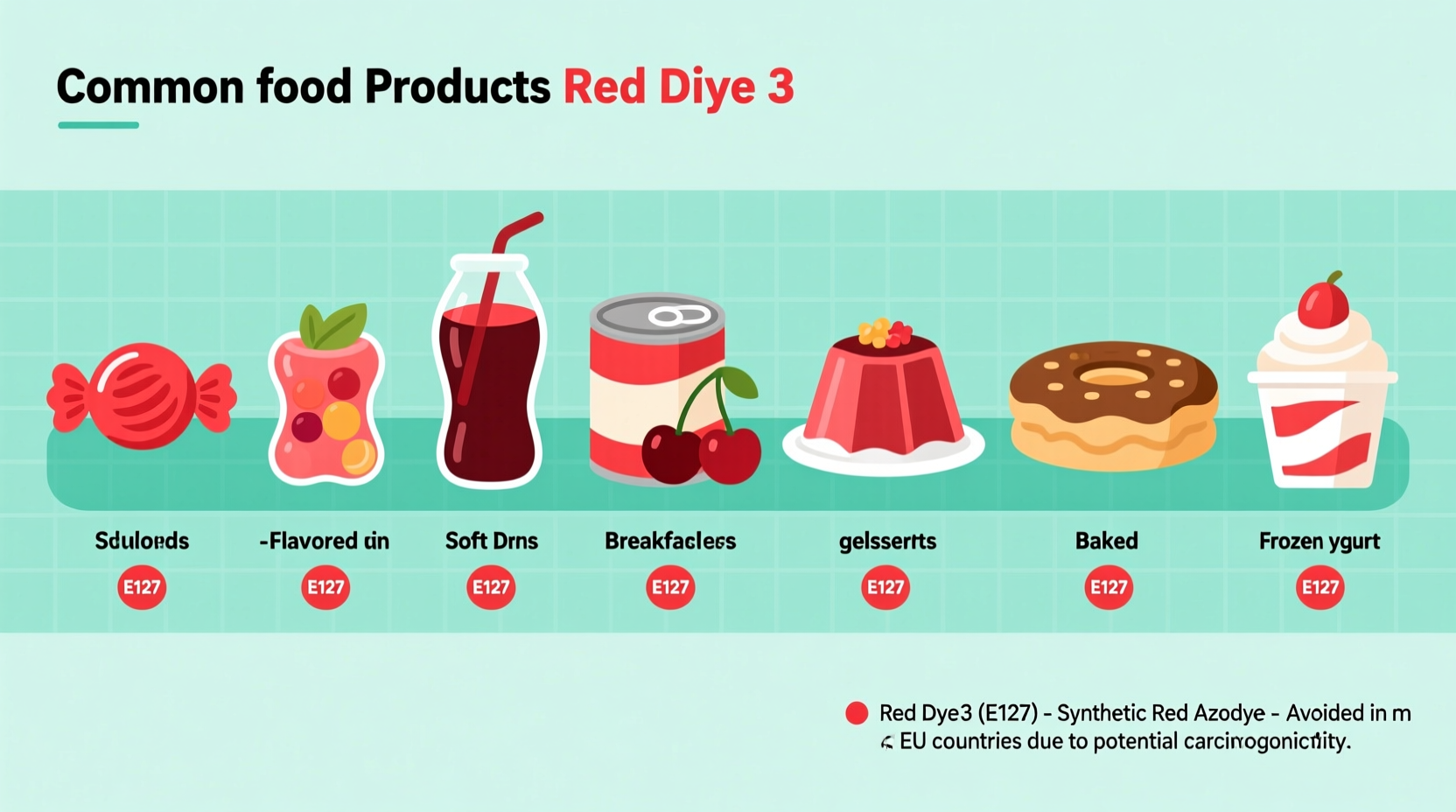If you're checking labels due to health concerns or dietary restrictions, you need accurate information about where red dye 3 hides in your food. This synthetic coloring agent remains widely used despite regulatory restrictions in some regions, making identification crucial for informed choices. Let's examine exactly which products contain it and how to spot them.
What Exactly Is Red Dye 3?
Red dye 3 (Erythrosine or FD&C Red No. 3) is a petroleum-derived synthetic colorant approved by the U.S. Food and Drug Administration for specific food applications. Unlike natural colorings from beets or berries, this stable cherry-red pigment maintains its hue in low-pH environments like fruit products. While the European Union banned it for food use in 2009 due to thyroid concerns, the FDA maintains its approval with usage limits under 21 CFR §74.1705.
Why Manufacturers Use Red Dye 3
Food producers favor red dye 3 for three practical reasons:
- Acid stability - Unlike many red dyes, it won't fade in citrus-based products
- Cost-effectiveness - Significantly cheaper than natural alternatives
- Color consistency - Provides uniform appearance across production batches
This explains its prevalence in products where visual appeal directly impacts sales, such as candied fruits and children's snacks.
Common Foods Containing Red Dye 3
Based on FDA compliance records and ingredient analysis from major food manufacturers, these categories consistently contain red dye 3. Always check labels as formulations change.
| Food Category | Specific Products | Why It's Used |
|---|---|---|
| Maraschino Cherries | Brand-name cocktail cherries | Maintains bright red color in acidic syrup |
| Candies & Sweets | Strawberry gummies, fruit chews, popsicles | Stable color in high-moisture environments |
| Baked Goods | Cake decorations, icing colors, donut glazes | Resists fading during baking processes |
| Fruit Products | Fruit fillings, canned pie cherries, jams | Prevents browning in acidic preparations |
| Dairy Alternatives | Some strawberry-flavored non-dairy creams | Provides consistent color without curdling |
How to Spot Red Dye 3 on Labels
Manufacturers must declare this additive using specific terminology. Look for these exact phrases in ingredient lists:
- "FD&C Red 3" (most common)
- "Erythrosine"
- "E127" (European designation, still appears on some U.S. imports)
Be particularly vigilant with products marketed to children, as the FDA notes these often contain higher concentrations of artificial colors. Remember that "natural flavors" doesn't guarantee absence of synthetic dyes.
Regulatory Timeline and Safety Context
Understanding the evolving regulatory landscape helps interpret current usage:
- 1931 - FDA first approved for limited food use
- 1990 - FDA banned in cosmetics after animal studies showed thyroid tumors
- 2009 - EU prohibited in all foods citing insufficient safety data
- Present - FDA maintains approval with usage limits of 2-50 ppm depending on product
Current research, including a 2018 Journal of Food Science review, indicates red dye 3 poses minimal risk for most consumers at approved levels. However, the CDC acknowledges potential behavioral effects in sensitive children, creating important context boundaries for parents and caregivers.

Practical Avoidance Strategies
If you're limiting red dye 3 exposure, implement these evidence-based approaches:
- Decode label terminology - Recognize "FD&C Red 3" as the primary identifier
- Choose whole foods - Fresh fruits avoid processing where dyes are added
- Seek certified alternatives - Look for USDA Organic (prohibits synthetic dyes) or Non-GMO Project Verified
- Request formulations - Contact manufacturers directly about specific products
For maraschino cherries specifically, natural alternatives use beet juice or anthocyanins from berries. These provide similar color without synthetic additives, though they may fade faster in acidic environments.
When Red Dye 3 Might Be Unavoidable
Complete avoidance requires understanding realistic limitations. In some contexts like restaurant-prepared foods or institutional meals (schools, hospitals), ingredient transparency is limited. The FDA's menu labeling rules don't require disclosure of specific color additives in prepared dishes. When dining out, request sauces and decorations on the side to minimize exposure.
Final Considerations for Informed Choices
While red dye 3 remains FDA-approved, consumer demand drives industry change. Major manufacturers like General Mills and Nestlé have reformulated products to replace synthetic dyes with natural alternatives in response to market pressure. Your purchasing decisions directly influence this shift toward cleaner ingredient profiles. Always prioritize products with transparent labeling practices, as this indicates broader commitment to ingredient quality beyond just color additives.











 浙公网安备
33010002000092号
浙公网安备
33010002000092号 浙B2-20120091-4
浙B2-20120091-4